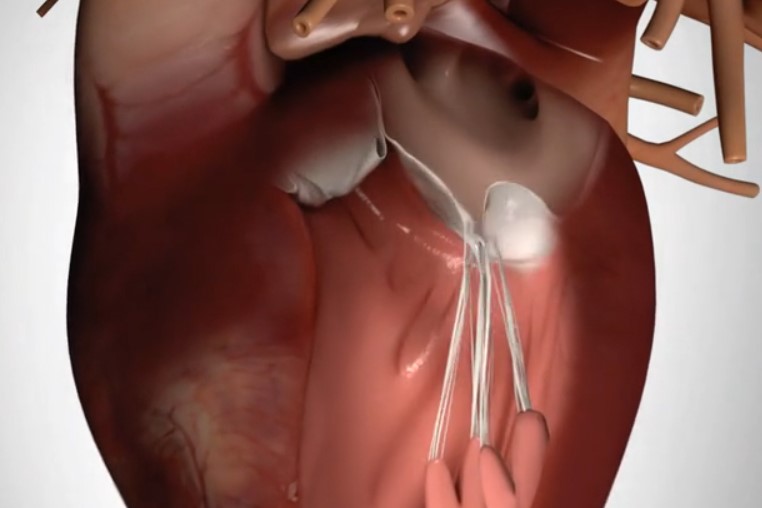
Mitral valve prolapse: symptoms, causes and complications
Mitral valve prolapse occurs when the flaps (leaflets) of the heart’s mitral valve bulge (prolapse) like a parachute into the heart’s left upper chamber (left atrium) as the heart contracts
Mitral (MY-trul) valve prolapse sometimes leads to blood leaking backward into the left atrium, a condition called mitral valve regurgitation
In most people, mitral valve prolapse isn’t life-threatening and doesn’t require treatment or changes in lifestyle. Some people with mitral valve prolapse, however, require treatment.
Symptoms of mitral valve prolapse
Although mitral valve prolapse is usually a lifelong disorder, many people with this condition never have symptoms. When diagnosed, people may be surprised to learn that they have a heart condition.
When signs and symptoms do occur, it may be because blood is leaking backward through the valve.
Mitral valve prolapse symptoms can vary widely from one person to another.
They tend to be mild and develop gradually. Symptoms may include:
A racing or irregular heartbeat (arrhythmia)
- Dizziness or lightheadedness
- Difficulty breathing or shortness of breath, often during physical activity or when lying flat
- Fatigue
When to see a doctor
If you think you have any of the above symptoms, make an appointment with your doctor.
Many other conditions cause the same symptoms as mitral valve prolapse, so only a visit to your doctor can determine the cause of your symptoms.
If you’re having chest pain and you’re unsure if it could be a heart attack, seek emergency medical care immediately.
If you’ve already been diagnosed with mitral valve prolapse, see your doctor if your symptoms worsen.
DEFIBRILLATORS, VISIT THE EMD112 BOOTH AT EMERGENCY EXPO
Mitral valve prolapse, the causes
The mitral valve controls the flow of blood between the upper and lower chambers of the left side of the heart.
When your heart is working properly, the mitral valve closes completely when the heart pumps and prevents blood from flowing back into the upper left chamber (left atrium).
But in some people with mitral valve prolapse, one or both of the mitral valve leaflets have extra tissue or stretch more than normal, which causes them to bulge like a parachute into the left atrium each time the heart contracts.
The bulging may keep the valve from closing tightly. In some cases, blood may leak backward through the valve (mitral valve regurgitation).
This may not cause problems if only a small amount of blood leaks back into the left atrium.
More severe mitral valve regurgitation can cause symptoms such as shortness of breath, fatigue or lightheadedness.
Another name for mitral valve prolapse is click-murmur syndrome.
When a doctor listens to your heart using a stethoscope, he or she may hear a clicking sound as the valve’s leaflets billow back, followed by a whooshing sound (murmur) resulting from blood flowing back into the atrium.
DEFIBRILLATORS OF EXCELLENCE IN THE WORLD: VISIT THE ZOLL BOOTH AT EMERGENCY EXPO
Other names to describe mitral valve prolapse include:
- Barlow’s syndrome
- Floppy valve syndrome
- Billowing mitral valve syndrome
- Myxomatous mitral valve disease
Risk factors
Mitral valve prolapse can develop in any person at any age.
Serious symptoms of mitral valve prolapse tend to occur most often in men older than 50.
Mitral valve prolapse can run in families and may be linked to several other conditions, such as:
- Marfan syndrome
- Ehlers-Danlos syndrome
- Ebstein anomaly
- Muscular dystrophy
- Graves’ disease
- Scoliosis
Complications
Although most people with mitral valve prolapse never have problems, complications can occur.
They may include:
- Mitral valve regurgitation. The most common complication is a condition in which the valve leaks blood back into the left atrium. Being male or having high blood pressure increases your risk of mitral valve regurgitation. If regurgitation is severe, you may need surgery to repair or replace the valve in order to prevent heart failure.
- Heart rhythm problems (arrhythmias). Irregular heart rhythms most commonly occur in the upper chambers of the heart. They may be bothersome, but aren’t usually life-threatening. People with severe mitral valve regurgitation or severe deformity of their mitral valve are most at risk of having rhythm problems, which can affect blood flow through the heart.
- Heart valve infection (endocarditis). The inside of your heart is lined by a thin membrane called the endocardium. Endocarditis is an infection of this inner lining.
An abnormal mitral valve increases your chance of getting endocarditis from bacteria, which can further damage the mitral valve.
Read Also:
Emergency Live Even More…Live: Download The New Free App Of Your Newspaper For IOS And Android
Mitral Valve Diseases, Causes And Symptoms
Heart Patients And Heat: Cardiologist’s Advice For A Safe Summer
Mitral Valve Diseases, The Advantages Of Mitral Valve Repair Surgery
COVID-19 Infections Increase Risk Of Heart Conditions Up To A Year Later


